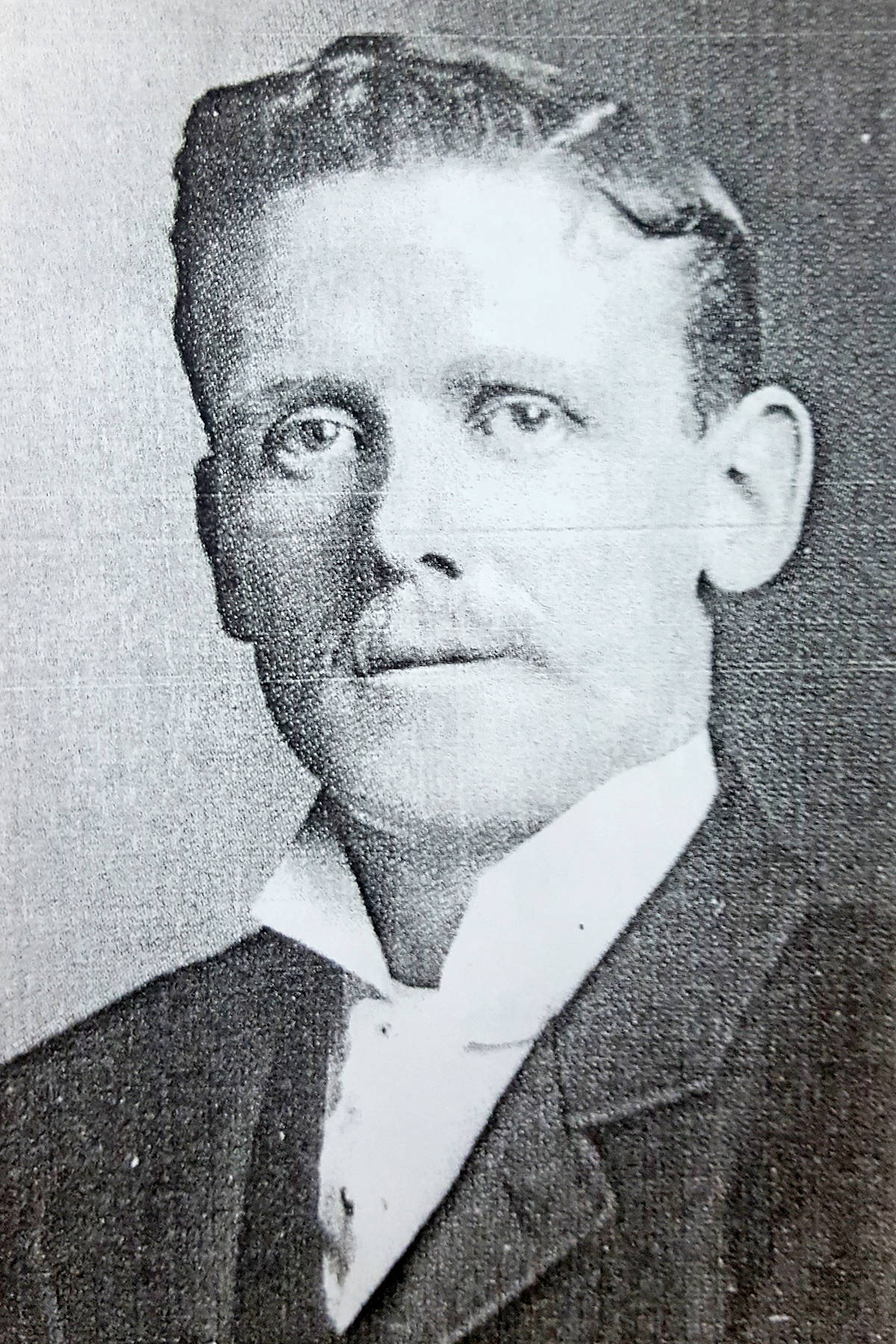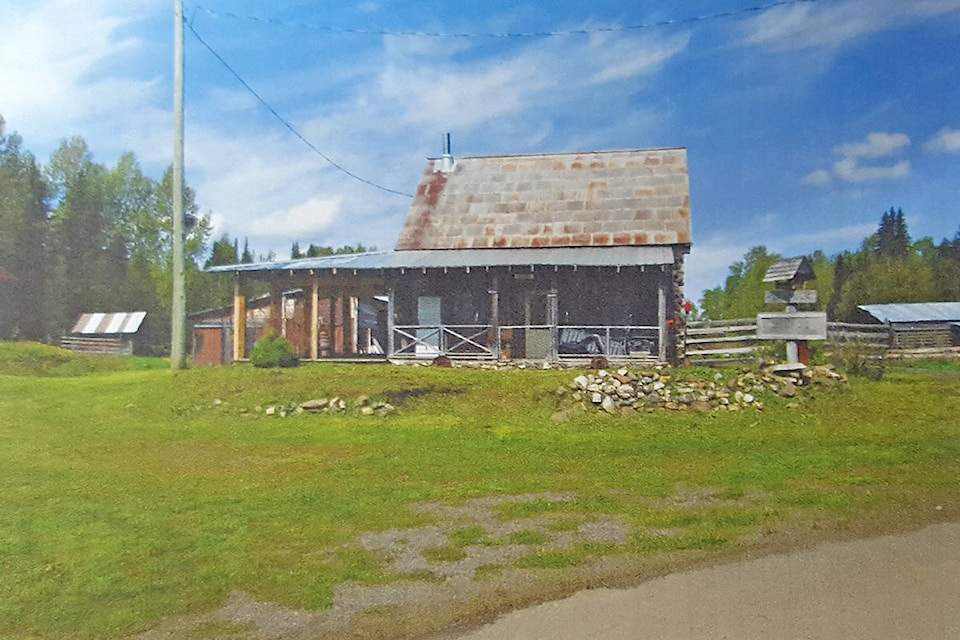As you travel along the Likely Road, 10 kilometres before the Quesnel River bridge into the town, you will see the Prior Lake Road veering off to the left.
Back in the day this was the main route to the Bullion Mine, and beyond that, to Quesnel Forks.
Less than a kilometre in on this road you will see an old log roadhouse, a couple of weathered log outbuildings, and a decaying barn.
These are the remnants of the Prior homestead, and they form part of another chapter in our local history.
Samuel Crabtree Prior was born in London in 1871. He made his way to Canada on his own at the young age of 13.
For a while, he lived with an uncle in Bowmanville, Ont., near Toronto.
There, he worked on a vegetable farm.
When his brother, Robert, immigrated to Canada, the two siblings began to make plans to move west.
They had heard about the opportunities, the gold, and the availability of cheap land.
In 1891, they made the long trek, ending up in the Cariboo.
At first, Sam tried mining, working at George Veith’s Onward Mine at Keithley Creek.
Two years later he was employed on Robert Borland’s 160-acre ranch there.
He was a hard-working hand, and Borland increasingly gave him more responsibility.
In 1892, Borland acquired the 160-acre Little Lake preemption, and he added a small, log house, a roadhouse and store, a large barn and stables, a slaughterhouse, some small outbuildings and about four miles of fencing.
READ MORE: The Meldrum family and its legacy
Sam Prior was placed in charge of the slaughterhouse operation, a position he kept for several years.
About once a week, a dozen steers or so would be driven from the 153 Mile Ranch to Little Lake, where they were butchered and the meat sold to Quesnel Forks for distribution to the Cariboo gold fields.
Later on, the Bullion Mine became the main customer.
When Borland purchased 1,500 acres of the original Pinchbeck Ranch at the foot of Williams Lake in 1900, he sold his Little Lake holdings to Sam Prior.
Sam continued to operate the butchering business as well as to run the roadhouse and store.
By all accounts, he was a handsome, well-mannered young man who dealt fairly and honestly with everyone.
As his business increased with the opening and expansion of the Bullion Mine operations, a small village of sorts grew up around the Prior homestead.
It was named Hydraulic, and virtually all its residents were involved with servicing or supplying the nearby mine.
Sam Prior remained a bachelor until 1910, when, at the age of 39, he courted and became engaged to Emily Ehalt, the daughter of the foreman in charge of the water supply for the Bullion Mine.
The couple were married at Bullion City in the spring of 1910, and they returned to England for their honeymoon.
When they returned home that fall, they found that the original two-storey log roadhouse where they planned to live had burned to the ground.
The local rumour was that it was arson, done in retaliation for Sam Prior’s involvement in the capture of Sam Lock, a popular worker who had stood up to the Chinese Tong society at Quesnel Forks.
Sam went to work immediately and constructed a rough hewn log dwelling.
It served for a while, but by 1913, a new roadhouse was completed, boasting a parlour, a dining room, a large kitchen, a pantry and five bedrooms upstairs.
That year, as well, a post office was opened, which would serve the area for the next 47 years.
Emily was an excellent cook, and a good, steady income was made by providing meals and lodging for travellers.
Hydraulic was the last stagecoach stop before Quesnel Forks, and its reputation for good meals and clean rooms and bedding made it a popular stopping place.
Sam also did well, providing feed, stabling, and pasturing for horses, wintering stock, renting out saddle horses, delivering goods to various locations, and transporting men and equipment to mining camps in the area.
In 1913, a meal or a bed for the night was 50 cents. Hay for one horse and overnight stabbling also cost 50 cents.
During the war years, Prior’s store continued to provide all the basic provisions at reasonable prices.
Sam also bought furs and gold and sold various licences. The couple had two children, a son, Joe, and a daughter, Bernice, both of whom grew up on the homestead and were expected to help out with the business.
In 1923, technology arrived at Hydraulic in the form of a telephone.
It proved to be a great asset, being the only phone in the area.
It was used constantly by the people in the area (for a price) and proved to be a popular boon to enable them to communicate with the world at large.
Throughout the 1920s and 1930s Sam continued to operate the post office, receiving $30 per month for that service.
This income was a great help in enabling the family to come through the depression years.
In 1928, Sam proudly purchased a new Chevrolet sedan, which he never learned to drive.
For years, it was rented out to customers as a “hire car” and it paid for itself many times over.
1933 was the first year that the Williams Lake Stampede held a Stampede Queen contest. The Tribune of the day wrote: “Some lucky maiden in this country-wide contest is going to preside over the three-day festivities. Ballot boxes will be in all stores and country places, and votes will be on sale at one nickel for twenty.”
Six young women entered, but the contest was really between Bernice Prior and her friend, Kathleen Spencer.
READ MORE: William Pinchbeck is not alone on the hill
Kathleen was in the lead with the most votes sold when “a kindly old prospector from Likely, just in from the hills and mining pits with his pockets full of gold, bought Bernice’s entire stock of tickets.”
Bernice won the contest and became Williams Lake’s first Stampede Queen.
Her prize package included a cash prize of $25 and a ball gown of her choice to the value of another $25.
Sam Emily Prior remained at Hydraulic, keeping the store, roadhouse and service operations going, even though the business and the town declined through the hungry 1930s.
In the mid 1940s, Sam’s eyesight began to deteriorate, and he was forced to retire in 1950.
By then, the roadhouse and store had also closed down. Two years later, he underwent surgery in Vancouver to remove cataracts in both eyes, and his sight improved enough that he could continue to operate the post office.
In January of 1960, Sam Prior died of natural causes at the age of 89.
The post office was closed a month later, on Feb. 12. Emily continued to live at the roadhouse for the next 21 years.
She remained active and independent, and took up raising foxes for their furs.
Her feistiness showed through on one occasion in her early 80s when a chimney fire began taking hold of the shake roof.
When the neighbours arrived to help her out, Emily was already up on the roof putting out hot spots.
A used metal roof was located at the abandoned town of Bullion, and the cedar shakes were replaced with the interlocking panels that are still there today.
Emily remained at her home until she passed away in 1981.
The old roadhouse has since had a series of owners, but it still looks much the same as it did for more than a century.
It is a relic of a bygone era, and a reminder of one family’s long and dedicated service to the people of the Likely area.
For this column, I relied on an article I found in a 1994 Canadian West magazine, on the writings of Branwen Patenaude and Irene Stangoe, and conversations with Jim Gibson of Likely.
Do you have a comment about this story? email:
editor@wltribune.com
Like us on Facebook and follow us on Twitter.

